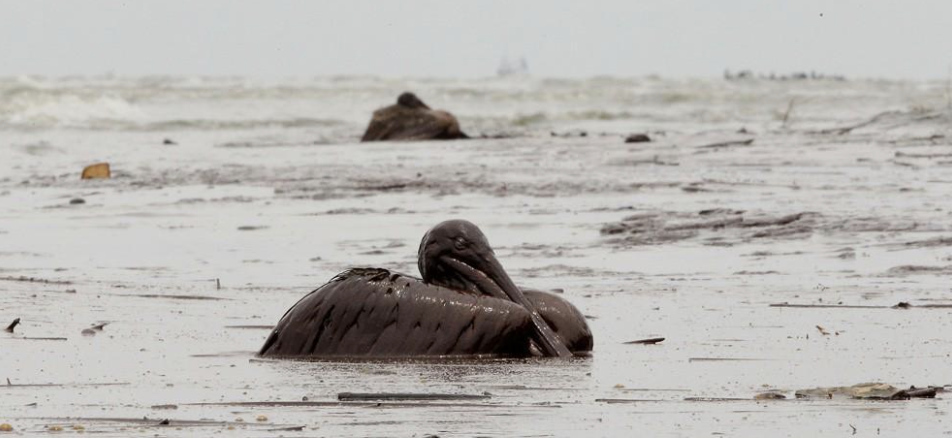Charlie Riedel, American
Bird Mired in Oil on the Beach, East Grand Terre Island, Louisiana, June 3, 2010, 2010
In this canonical photo from Charlie Riedel’s Deepwater Horizon photo essay, a bird’s attempt to rise, or to simply move at all, is juxtaposed by the weight of a thick coating of oil residue. In fact, the bird is so obscured that it takes the form of a different animal or a new type of alien creature altogether. This reflects the relative silence animals have in the debate over whether or not humans have a right to use their habitats for harmful resource production. The way Riedel has captured his image emphasizes the abrupt recognition of harm done to something we cannot readily see, but are vaguely aware of. Fossil fuels burn quickly, but the effects of their extraction accrue lasting damages. Label by Kristin Rheins


